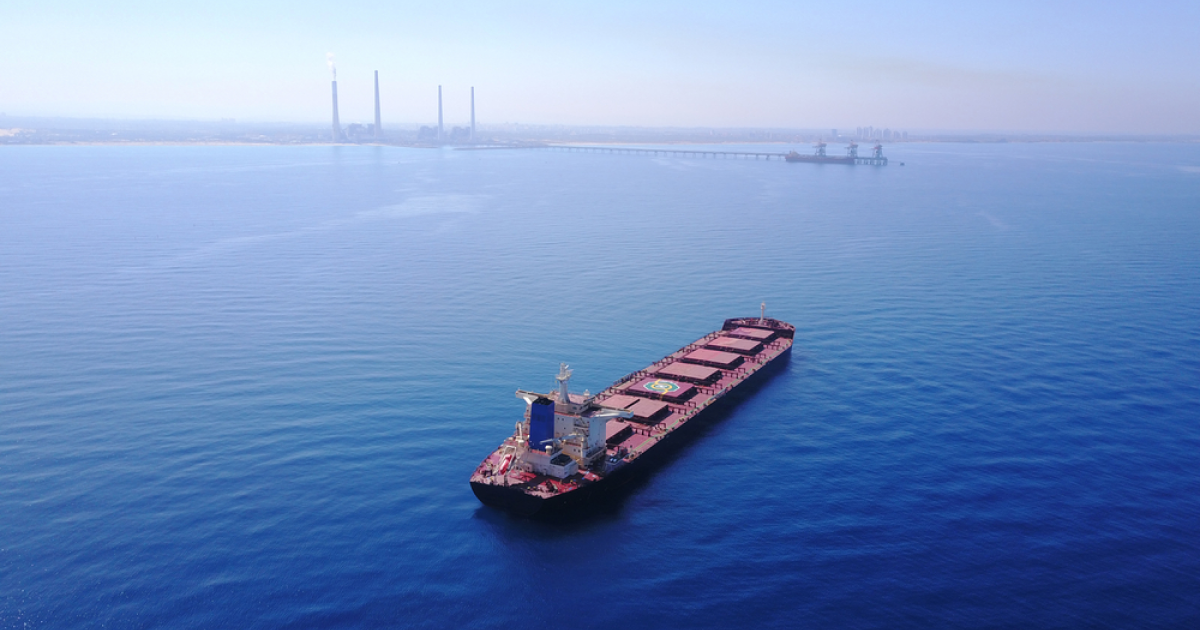
Posts Infrastructure sea transportation 5122 04 January 2025
The safety factor remains the main factor for 2025
In December, freight rates in the Black Sea were affected by weak trading activity amid a slowdown in grain exports. Market conditions prevented shipowners from keeping prices at the desired level.
Black Sea
Ukrainian brokers predicted an increase in freight rates in December, as the end of the year usually sees an increase in demand for sea transportation. In addition, grain exports were expected to increase. However, the trend was somewhat different.
In particular, the market was affected by the introduction of new export rules on December 1 this year, which regulate the taxation of exports of certain types of agricultural products. The new system for registering tax invoices at the beginning of the month caused delays in shipments as it had not been tested. This coincided with low trading activity, reducing demand from charterers.
In early December, the supply of grain cargoes from Ukrainian and European ports remained low, according to a survey by Maritime Logistics. Non-grain cargoes, including metal products and fertilizers, were also weak. Although the number of vessels in the region decreased slightly, there was still an excess of cargo.
In the first decade of December, the situation on the Black Sea markets remained tense for shipowners due to the accumulation of excess cargo in ports and on the roads, and weak activity of major importers. Market conditions prevented them from keeping freight rates at an acceptable level.
On December 18-25, according to Spike Brokers, the market of freight rates for sea transportation from the ports of Greater Odesa remained stable despite the slowdown in grain exports. Market rates for transportation from seaports remained unchanged compared to the previous week and were as follows:
- Chornomorsk – east coast of Italy (30-35 thsd tonnes) – $17-18,
- Chornomorsk – the east coast of Spain (25-30 thousand tons) – $22-24.
In early December, they were $20-21 and $23-25, respectively.
The previous month – November – was characterized by low trading activity and availability of free tonnage in the Black Sea region. Shipowners were competing for cargoes, which prevented them from raising freight rates or keeping them at the same level. In a number of cases, ship owners agreed to less favorable offers to ensure loading.
Overall, in the first 11 months of this year, the volume of cargo handled by Ukrainian seaports, according to the USPA, amounted to 89.9 million tons. The volume of ore cargo transshipment in the period increased to 16.7 million tons, compared to 3.2 million tons in January-November 2023, the share of grain amounted to 56.1 million tons (39.4 million tons in 2023). In January-November, 73.4 million tons of cargo were transported via the Ukrainian sea corridor (6.5 million tons in November).
Security factor
The impact on Ukrainian maritime exports will be primarily determined by the security factor.
Thus, in his October review, BIMCO shipping analyst Filipe Gouveia notes that if Ukraine’s maritime exports are disrupted again, as they were at the beginning of a full-scale war, this will affect not only food prices but also the dry cargo market to some extent. Although the price of war risk insurance increased in October after the Russian attack on the port of Odesa and the hitting of civilian ships, the impact on exports was limited at the time.
As noted, two-thirds of Ukraine’s exports are carried by Panamax and Handysize vessels – the former are used for shipments to Asia, while the latter mainly deliver cargo to Mediterranean ports.
The Capesize segment may also be adversely affected by disruptions in the operation of Ukrainian ports, but to a lesser extent. These vessels mainly transport iron ore, but such cargoes, according to the BIMCO analyst, can be replaced by Australian or Brazilian ones. However, they may face a slight decline in demand due to the shorter sailing distance to China.
However, regardless of the security conditions for merchant ships, Ukraine’s dry bulk exports are likely to fall in 2025, the analyst concludes. In particular, it will be affected by the decline in corn yields.
Baltic Dry Index
In 2024, the Baltic Dry Index (BDI), according to Trading Economics, recorded a 52.5% drop, the worst period since 2014, due to poor performance across all categories of vessels. The Capesize index fell by 66.7% this year, while the Panamax index fell by 48.7%.
Before Christmas, on December 24, the overall Baltic Dry Index (BDI), which takes into account rates for Capesize, Panamax and Supramax vessels, stood at 997 points, down 3 points from the previous session.
The Capesize Index, which tracks 150,000 dwt iron ore and coal cargoes, was at 1147 points, up 15 points from the previous session. As of December 24, the average daily earnings for vessels of this class increased by $128 to $9516.
The Panamax index, which tracks coal and grain cargoes of 60,000 to 70,000 tons, rose eight points to 988 on December 24 compared to the previous session. The average daily earnings for vessels of this class increased by $68 to $8888.
It should be noted that as of December 2, the total BDI index was 1298 points, and the Capesize index was 1973. The average daily earnings for vessels of this class as of that date were $16,363.
Forecasts for 2025
According to Will Frey, director of MSI, the dry bulk market in 224 was largely supported by a combination of inventory build-up in China and disruptions to trade patterns, with additional support provided by longer voyage distances. Together, these factors offset the negative impact on freight revenues from fleet growth.
With China’s coal and iron ore reserves close to record levels and underlying consumption dynamics remaining weak globally, it is difficult to foresee a significant improvement in cargo growth in 2025, although bulk carrier owners will strive to reach the levels of the previous year. In particular, it will be a challenge to absorb the additional deadweight by the market.
In addition, in 2024, shipowners’ expectations of growth during the traditionally strong fourth quarter did not materialize, with the Capesize market declining from the start. Unfavorable trends were also observed for Panamax and smaller ship segments.
At the same time, Fitch Ratings, in its December review of the global shipping outlook, predicts that the tanker segment of the dry bulk carrier industry will remain stable in 2025.
In general, the rating agency notes that shipping remains one of the most vulnerable sectors to geopolitical risks. This is due to the presence of several bottlenecks on key trade routes, its role in global supply chains, and its limited ability to regulate effective throughput in the short term.
Global shipping in 2024 benefited from the continuation of existing conflicts and the emergence of new vulnerabilities. At the same time, the reduction of geopolitical risks may normalize the increased freight rates, but this will take some time.
Fitch analysts also emphasize the risks of changes in trade policy, which are especially likely after this year’s US election results. In 2025, this may reduce demand for the services of shipping companies. In particular, supply chain planning “just in case” may lead to a short-term surge in demand.
In addition to the uncertainty for shipping due to the return of Donald Trump to the White House and the ongoing Russian-Ukrainian war, market participants also point out that the situation will depend on whether ships will be able to return to the Red Sea and Suez Canal routes next year.





